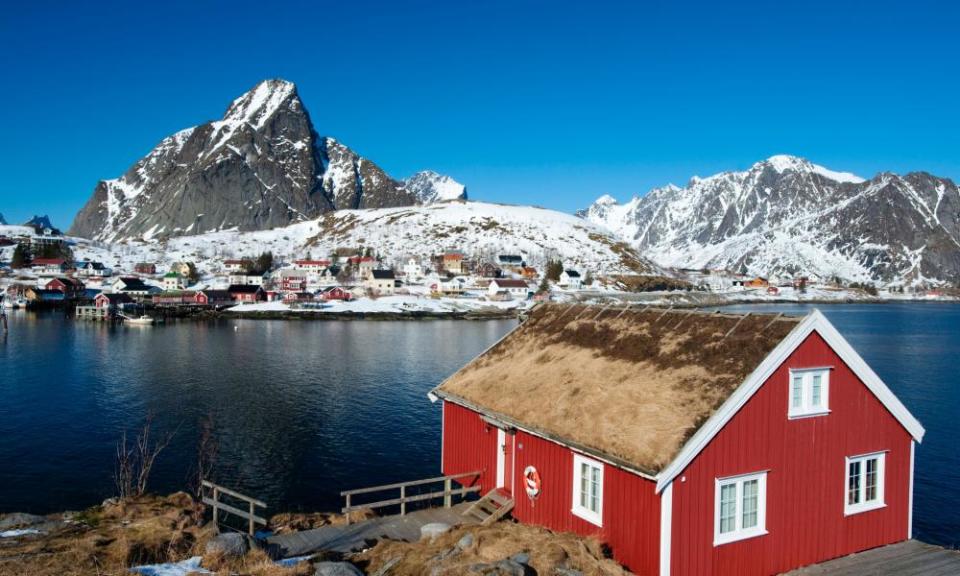Cabin fever: will Scotland embrace hut culture after Covid?
“It’s the place where people bury their pets,” says Lesley Riddoch, as she attempts to describe the profound connection that Norwegians have for their wooden cabins, or hytte, which caan be found across forests and fjords in their hundreds of thousands. “While people change their first homes to accommodate work or family, the hut is a constant, and it is home on an emotional level.”
The broadcaster and land reform campaigner is at the end of a 10-year investigation into what started out as a simple question: could half a million wooden huts sprinkled through the woodlands of Scotland transform the nation’s health, happiness and democracy? The resulting book, Huts: a place beyond, is a clarion call for a revolution in the way that we understand home, leisure and our relationship with the natural world, that has added bite since the pandemic has led many people to reassess their living arrangements.
Reports of a run on the Highland property market post-lockdown have been treated with understandable suspicion by a population who have likened the lack of affordable property for locals to a new economic clearances. But for Riddoch, part of the problem is really about an absence of huts.
“There’s such a pushback against second homes in Scotland, because they are effectively other people’s first homes, while huts – modest, low-impact dwellings – have no impact on local housing stock.”
She again makes the comparison with Norway, where one in 10 own a holiday home, compared with Scotland where it is the preserve of the wealthy elite. The main reason for this massive discrepancy is the type of holiday home that is typical in each country: in Norway, 93% of second homes are purpose-built wooden hytte. There are almost 500,000 of these cabins in Norway, while in Scotland Riddoch estimates there are fewer than 600.

These weekend retreats are common at wooded latitudes from Canada, through the Nordic and Baltic states, to Russia, building on a tradition that began in the 1920s and 30s when working people escaped the disease and squalor of the inner cities. They were normally built no more than an hour or so from the main family home, to maximise leisure time, and facilities were deliberately basic to spare expense and fuss. Most notable in the UK were the “plotlands”, makeshift holiday communities that thronged with Londoners in the marshlands and meadows around south Essex.
But decades of urban sprawl, tightening legislation and evictions have seen the hutting tradition dwindle, with only a few pockets remaining, sustained by dedicated enthusiasts. There are huts on the Gower Penninsula in Wales, at Lendalfoot in south Ayrshire, and Hopeman on the Moray coast. The largest remaining hutting community is at Carbeth, near the Campsie Fells, where residents raised £1.75m in 2013 to buy out their landlord, 90 years after Govan-born socialist William Ferris first set up camp there.
Land reforms over the past three years, which have exempted huts from building regulations and recognised them in planning legislation, have added momentum to the plans to re-establish the hutting tradition in Scotland. But the challenge remains the lack of available land for small-scale building.
As Riddoch warns: “The opportunities don’t meet demand. Huts are built in woods, but the Forestry Commission has traditionally locked its gates and not seen huts as having an amenity value, while private forests are owned by a small number of big players who share the view that forests are not for people”.

Despite this, there are up to 300 new huts in development, according to Donald McPhillimy of Reforesting Scotland, whose Thousand Huts campaign offers detailed practical advice on constructing safe, sustainable huts.
For Ninian Stuart, who build his first hut a decade ago on the Falkland estate in Fife, where a new hutting community is establishing itself, the 9-metre sq timber construction, with a wide covered porch, which cost around £10,000, is “my favourite place in the world”.
With a cushioned seating or sleeping bench, and a table by the window with a view over the woods, “It’s pretty basic, I’m trying to get away from ‘stuff’. It’s where I go once a week and whenever I go there I think I’m home. It really is the most special place to me”.

 Yahoo News
Yahoo News 
